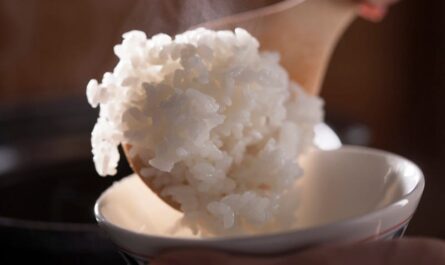The origin of sushi rice is a fascinating journey that takes us back in time, revealing the evolution of one of the world’s most beloved culinary staples. Sushi, as we know it today, is a testament to the art of Japanese cuisine, where the delicate balance between flavor and texture is achieved through the careful preparation of rice. Understanding the history of sushi rice not only deepens our appreciation for the dish but also connects us to the cultural heritage of Japan.

The Beginnings of Sushi
Sushi’s journey begins in Southeast Asia, where the process of fermenting fish with rice was first developed. This early form of sushi, known as narezushi, involved packing fish with rice to preserve it. As time progressed, this preservation method spread to Japan, where it underwent significant changes. In Japan, the focus shifted from fermentation to the enjoyment of both the fish and rice together, eventually evolving into what we recognize as sushi today.
For more on the historical context, you might find this guide to rice insightful.
The Evolution of Sushi Rice
The Introduction of Vinegar
During the Edo period in Japan (1603-1868), a significant innovation occurred that transformed sushi into the dish we know today. Vinegar was introduced to the rice, which not only enhanced the flavor but also acted as a preservative. This pivotal change allowed sushi to be prepared more quickly and consumed fresh, leading to the rise of sushi stalls in Edo (modern-day Tokyo).
The Role of Short-Grain Rice
The type of rice used in sushi is crucial for achieving the desired texture and taste. Short-grain rice, known for its sticky and slightly sweet qualities, became the preferred choice for sushi chefs. This variety of rice, grown primarily in Japan, binds well and holds its shape, making it ideal for sushi rolls and nigiri.
For more details on short-grain rice, refer to this comprehensive resource.
The Cultural Significance of Sushi Rice
Sushi as an Art Form
Sushi is not merely a dish but an art form that reflects the precision and skill of the chef. The preparation of sushi rice is a meticulous process that requires careful attention to detail. The rice must be washed thoroughly to remove excess starch, cooked to perfection, and seasoned with a precise mixture of rice vinegar, sugar, and salt. This balance of flavors is what makes sushi rice distinct and sets it apart from other types of rice.
The Global Influence of Sushi
In recent decades, sushi has gained immense popularity worldwide, becoming a symbol of Japanese cuisine. The origin of sushi rice plays a vital role in this global phenomenon, as it is the foundation upon which sushi is built. The appreciation for sushi’s simplicity and elegance has transcended cultural boundaries, making it a favorite among food enthusiasts everywhere.
Key Ingredients in Sushi Rice Preparation
Rice Vinegar
Rice vinegar is an essential component of sushi rice, adding a subtle tanginess that enhances the overall flavor. The vinegar is typically mixed with sugar and salt before being gently folded into the cooked rice. This seasoning process is crucial for achieving the perfect balance of flavors in sushi rice.
Cooking Techniques
The cooking of sushi rice is an art in itself. It involves precise measurements and timing to ensure the rice is neither too dry nor too sticky. The rice is often cooked in a traditional rice cooker or on the stovetop, with the lid kept on to allow the steam to circulate evenly. Once cooked, the rice is cooled to room temperature before seasoning.
The Modern Sushi Experience
Fusion and Innovation
As sushi continues to evolve, chefs around the world are experimenting with new flavors and ingredients, creating fusion dishes that blend traditional Japanese techniques with local ingredients. Despite these modern twists, the essence of sushi rice remains unchanged, rooted in its rich history and cultural significance.
Sustainability and Ethics
With the increasing demand for sushi, there is a growing emphasis on sustainability and ethical sourcing of ingredients. Ensuring the traceability of sushi rice and other components is becoming more important to consumers who are conscious of the environmental impact of their food choices. For more information on this topic, visit traceability sushi rice ethics.

Frequently Asked Questions
What is the main ingredient in sushi rice?
The main ingredient in sushi rice is short-grain rice, which is known for its sticky texture and ability to hold together well.
How is sushi rice different from regular rice?
Sushi rice is seasoned with a mixture of vinegar, sugar, and salt, giving it a distinct flavor and texture compared to regular rice.
Why is vinegar used in sushi rice?
Vinegar is used in sushi rice to enhance its flavor and act as a preservative, allowing it to be enjoyed fresh.
The origin of sushi rice is a captivating story that intertwines tradition, innovation, and cultural exchange. As you savor each bite of sushi, remember the centuries of history and craftsmanship that have contributed to this exquisite dish. Whether you’re a seasoned sushi lover or new to this culinary delight, understanding its roots deepens your appreciation for this iconic Japanese cuisine.
This article contains affiliate links. We may earn a commission at no extra cost to you.



